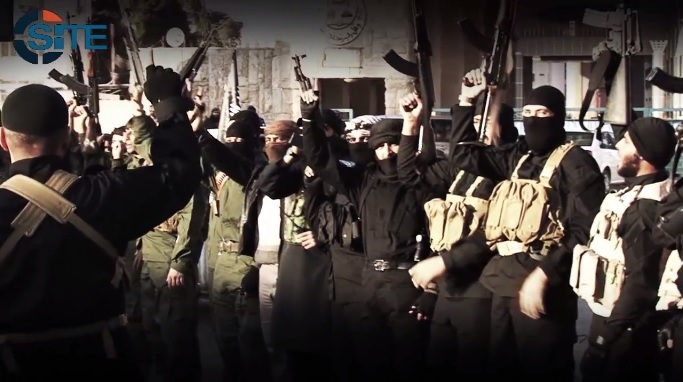The Syrian Conflict: The Arab Spring Version 2.0?

As the fighting continues in Syria and Iraq, much discussion has fallen upon the military response to the Islamic State (IS) and the Western bombing campaign and training efforts. What tends to be overlooked by the media, however, is the unique composition of the forces that make up the Islamic State (IS).
When we reflect on the other established terrorist groups that have been active in the recent past, such as al-Qaeda (AQ), al-Qaeda in the Arabian Peninsula (AQAP), al-Qaeda in the Islamic Maghreb (AQIM), al-Shabaab, and Hamas, you see organizations that are basically composed of hardened and experienced Islamist fighters. IS, however, is comprised of a mixture of both hardened jihadist warriors and young, combat-inexperienced Muslim men. Up to half of IS's membership, however, is comprised of young Muslim men who have joined the organization as adventure seekers, looking to cut their teeth into what they perceive as a worthy cause.
What is disconcerting is that IS is doing something that AQ, Hamas, AQAP, and other terrorist organizations could not do: draw pools of Muslim youth from all corners of the world to their cause. These young men are not coming out to serve refreshing drinks to the hardened jihadis; they are picking up a weapon and joining the front lines. With a membership of approximately 30,000 soldiers, with up to 15,000 of them being young foreigners coming from abroad, IS is creating a new pool of jihadists. Even more so, it is creating an unprecedented surge in the number of Muslim men under the age of 30 who are "war-ready." They now know how to load and use automatic weapons and shoulder to air missiles. Many now have acquired know-how in bomb-making, as well.
 What is occurring in Syria and Iraq vis-a-vis IS could very well be the second iteration of the Arab Spring. During Arab Spring v 1.0, the region watched in euphoria as the Arab Revolution started in multiple locations in 2011. In an amazingly short period, the Mubarak and Qaddafi regimes in Egypt and Libya were toppled. Democratically elected Muslim Brotherhood-controlled governments were established in both Egypt and Tunisia. The Libyan population was upbeat, primarily due to the ouster of the strong-man, but also about the possibility of having a say in a democratically elected national government. The Islamists, not just in the referenced countries, but all around the globe, were elated. The tide had perceivably turned after a generation of nationalist strong men had held sway in the region.
What is occurring in Syria and Iraq vis-a-vis IS could very well be the second iteration of the Arab Spring. During Arab Spring v 1.0, the region watched in euphoria as the Arab Revolution started in multiple locations in 2011. In an amazingly short period, the Mubarak and Qaddafi regimes in Egypt and Libya were toppled. Democratically elected Muslim Brotherhood-controlled governments were established in both Egypt and Tunisia. The Libyan population was upbeat, primarily due to the ouster of the strong-man, but also about the possibility of having a say in a democratically elected national government. The Islamists, not just in the referenced countries, but all around the globe, were elated. The tide had perceivably turned after a generation of nationalist strong men had held sway in the region.
When one reflects on the hyperbolic rise in aspirations of the Muslim youth in 2011 and 2012, and the deflation that occurred with the removal of the Brotherhood in Egypt and Tunisia, it is very plausible to regard the current phenomena of IS as the Arab Spring v 2.0.
In the last two years, however, the Egyptian military has come back to power and once again banned the Muslim Brotherhood from political activities. Libya has descended into fractionalized fighting between various militias, ethnic groups, and Islamist groups, so much so that it is teetering on anarchy. When one reflects on the hyperbolic rise in aspirations of the Muslim youth in 2011 and 2012, and the deflation that occurred with the removal of the Brotherhood in Egypt and Tunisia, it is very plausible to regard the current phenomena of IS as the Arab Spring v 2.0. Unfortunately for the world, this is not a good development. The Arab Spring v 1.0 was a relatively peaceful process (with the exception of Libya). It could very well be that v 2.0, however, is now an armed struggle that has given up on dialogue and the prospect of popular suffrage. This is one way to explain why IS has been capable of attracting such large numbers of young Muslim men (and even some young women).
It is also alarming that the source of the young fighters is global and not just local. It is more alarming that this could represent an Arab Spring v 2.0 that will begin to sprout up in other locations in Northwest Africa and the Middle East. Would these potential conflicts be able to draw upon such a pool of fighters, as well?
 More, IS and the Arab Spring v 2.0 have a distinct new attitude within the jihadi community. They regard the old hands of jihad as has-beens who need to step aside and make room for the next generation of jihad. And, to this point, a generational change amongst the jihadis could be occurring. Witness some of the recent comments by the jihadi community on one of their preeminent internet forums: The forum was hosting a eulogy for Abu Khalid al-Suri, the former AQ head in Syria, who had ostensibly been assassinated by IS on February 23, 2014, in response to comments by Zawahiri that disassociated AQ from IS and declared support to al-Nusra Front (NF). Many of the jihadis responding to the eulogy took the occasion to criticize Zawahiri as being an old man who was both lacking in wisdom and too far-removed from the Syrian conflict to justifiably weigh in on the strategy for it. Furthermore, some suggested that he was not an ideal leader for the global jihad movement, demanding that he be replaced by Nasser al-Wuhayshi, the head of AQAP. The perception was that al-Wuhayshi was younger and more in tune with the Syrian conflict due to his proximity in Yemen. He was also viewed as a much more capable and successful AQ operative due to his near successful terrorist strikes in the U.S.
More, IS and the Arab Spring v 2.0 have a distinct new attitude within the jihadi community. They regard the old hands of jihad as has-beens who need to step aside and make room for the next generation of jihad. And, to this point, a generational change amongst the jihadis could be occurring. Witness some of the recent comments by the jihadi community on one of their preeminent internet forums: The forum was hosting a eulogy for Abu Khalid al-Suri, the former AQ head in Syria, who had ostensibly been assassinated by IS on February 23, 2014, in response to comments by Zawahiri that disassociated AQ from IS and declared support to al-Nusra Front (NF). Many of the jihadis responding to the eulogy took the occasion to criticize Zawahiri as being an old man who was both lacking in wisdom and too far-removed from the Syrian conflict to justifiably weigh in on the strategy for it. Furthermore, some suggested that he was not an ideal leader for the global jihad movement, demanding that he be replaced by Nasser al-Wuhayshi, the head of AQAP. The perception was that al-Wuhayshi was younger and more in tune with the Syrian conflict due to his proximity in Yemen. He was also viewed as a much more capable and successful AQ operative due to his near successful terrorist strikes in the U.S.
The grievance that can be addressed in the short-term is not simply the allowance of popular suffrage in the region, but to also allowing permanence to the governments that result therefrom.
As this paradigm shift manifests itself further, the West and the Middle Eastern countries must find a way to counter the growing allure of violent jihad as the only form of protest. The grievance that can be addressed in the short-term is not simply the allowance of popular suffrage in the region, but to also allowing permanence to the governments that result therefrom. The conundrum here is that if an Islamist party is voted into power, it too must remember to respect and adhere to democratic ideals. If they do not do this, they will invite a heavy-handed response from the military and law enforcement services in their respective countries (as in the case of Egypt). The populations in question also need to understand how representational government is supposed to function, and not look at it as a means to an ends.
Could it be that this is the new Zeitgeist of the Arab Spring? Is it going to be fueled by hordes of young Muslim men who have decided that it is time to cross the "confrontational divide" (the point where one moves from political/public protest to armed conflict) because there is no longer a viable alternative? This is a very important question for those who study the origin of terrorist and insurgent groups. It would behoove those looking into such matters to pay close attention to the grievances of those joining the fray in Syria and Iraq. It would also do us well to study the frames and narratives that IS is using and the frames and narratives that are playing themselves out in the tweets between the new young jihadis.
The fact that IS is able to draw upon such a large number of young Muslim men who have never been in a previous jihadi conflict speaks volumes to the fact that the sentiment of oppression of Islam is not just a local issue restricted to conflict points. It points to the fact that many Muslims around the world feel that the powers-that-be will never let an Islamist government come to power due to a rampant distrust of the religion. Erroneous as this view may be, if these grievances are not properly addressed, the next iterations of the Arab Spring will not be softer, and the number of young Muslims willing to cross the confrontational divide will continue to soar.
